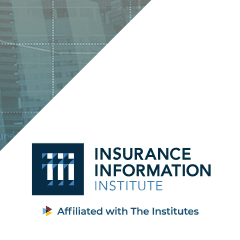By Loretta Worters, Vice President, Media Relations, Triple-I

When mega containership Ever Given wedged herself across a one-way section of the Suez Canal during a sandstorm last month, it brought 10 percent of global trade to a halt for a week. The ship – owned by Taiwanese container transportation and shipping company Evergreen Marine Corp. – was finally refloated and traffic in the canal was able to resume.
A Risk & Insurance cover story, published by Triple-I sister organization Risk & Insurance Group (RIG), describes how – in the context of a trend toward larger container vessels and a global supply chain already disrupted by COVID-19 – this incident should serve as a wake-up call for insurers.
Looking at the Ever Given grounding and disruption of canal traffic from a marine insurance perspective, RIG author Gregory DL Morris highlights the impact on cargo insurance claims and the potential for cargo spoilage. He also discusses compromised maneuverability of these massive vessels in high winds and references an increasing number of on-board fires, challenges surrounding salvage, and lack of suitable repair facilities, noting, “Underwriters need to be aware of this.”
Despite the likelihood that immediate property loss in this case will be minimal, megaships pose serious challenges to marine insurance and risk management. According to MDS Transmodal, a transport and logistics research firm, average vessels capacity grew 25 percent between 2014 and 2018, with ultra-large containerships accounting for 31 percent of the total capacity deployed in the second quarter of 2018. Transmodal attributes this trend to industry consolidation through mergers and acquisitions, as well as growing trade lane co-operation through alliances, slot sharing, and vessel-sharing agreements.
Even as traffic through the canal resumes, terminals will experience congestion. In addition, the severe drop in vessel arrival and container discharge in major terminals will aggravate existing shortages of empty containers available for exports. Delays in shipments, increased costs, and product shortages are therefore likely.
“The fact is that an already heavily disrupted maritime supply chain has taken another hit that will further affect its fluidity, with long-term consequences related to congestions, lead times and predictability,” said Jens Roemer, chair of the Sea Transport Working Group of the International Federation of Freight Forwarders.
While traffic through the canal is now moving, the global supply chain’s vulnerabilities may only now be beginning to become clear.
“Whether a blizzard in Texas or a sandstorm in Egypt,” Morris writes, “the narrow focus on minimal inventories that rely upon just-in-time delivery leaves little allowance for weather or accident.”








